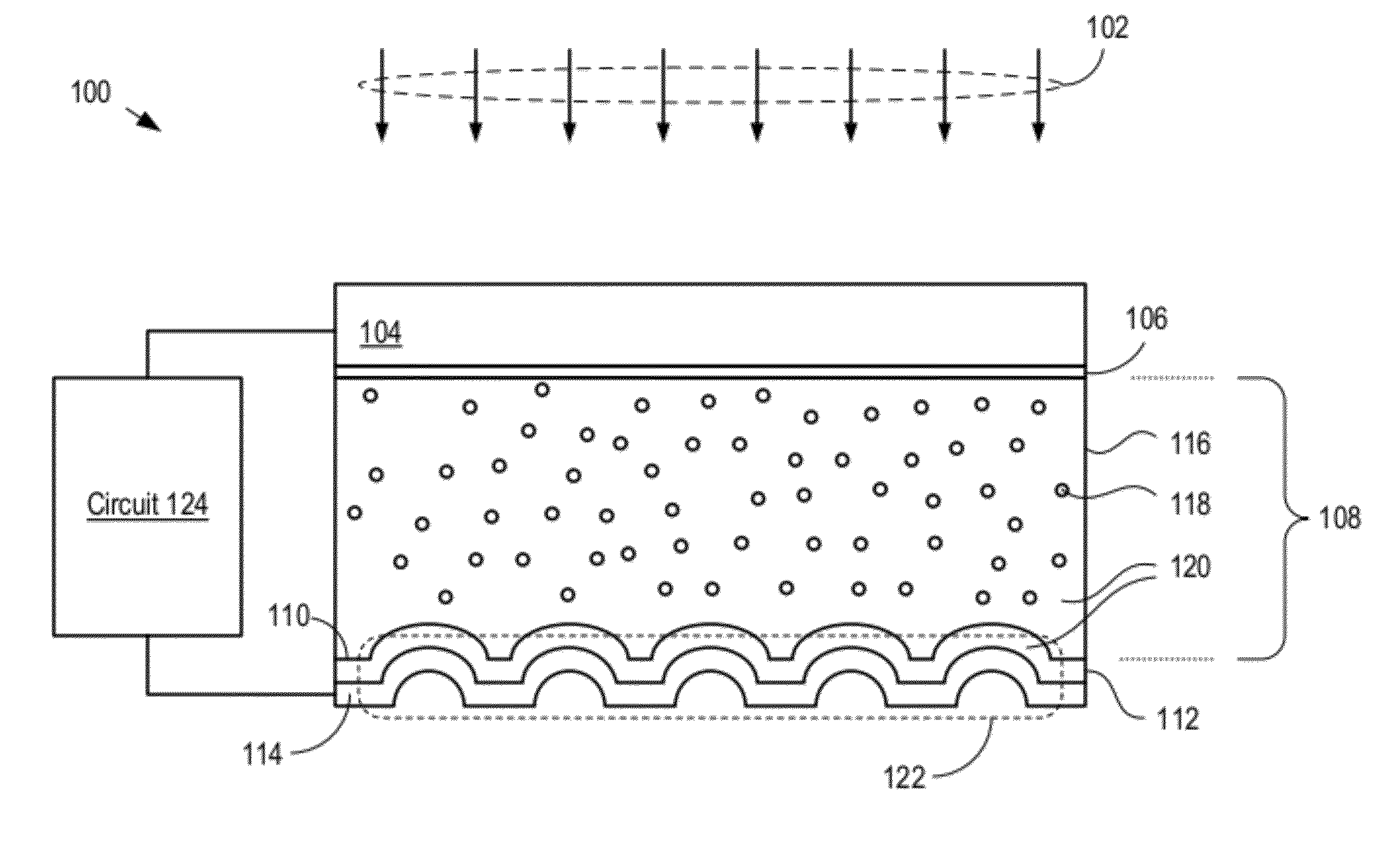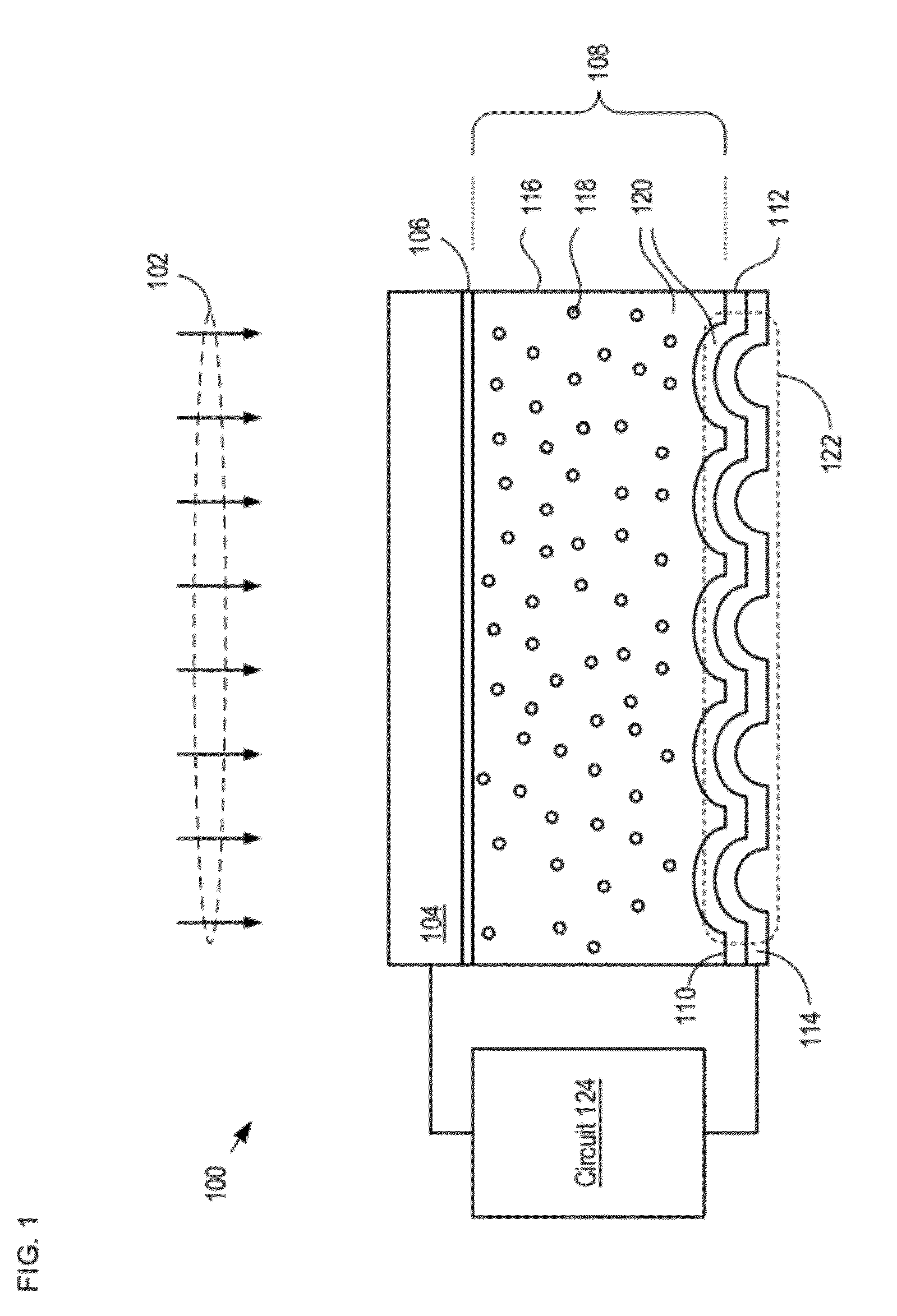Solar Cell Comprising a Plasmonic Back Reflector and Method Therefor
a solar cell and back reflector technology, applied in the field of photovoltaic devices, can solve the problems of limited adoption of solar cell technology, inefficient energy converters of solar cells, and high manufacturing costs, and achieve the effect of improving energy conversion efficiency and light absorption
- Summary
- Abstract
- Description
- Claims
- Application Information
AI Technical Summary
Benefits of technology
Problems solved by technology
Method used
Image
Examples
Embodiment Construction
[0034]The following terms are defined for use in this Specification, including the appended claims:[0035]Disposed on or Formed on is defined as “exists on” an underlying material or layer. This layer may comprise intermediate layers, such as transitional layers, necessary to ensure a suitable surface. For example, if a material is described to be “disposed (or grown) on a substrate,” this can mean that either (1) the material is in intimate contact with the substrate; or (2) the material is in contact with one or more layers that interpose the material and the substrate.[0036]Nanoimprinted surface is defined as a surface having proactively created surface structure that has dimensions within the range of approximately 1 nm to 1000 nm, and which is created via nanoimprint lithography techniques, such as hard nanoimprint lithography or soft nanoimprint lithography.[0037]Plasmonic surface is defined as a surface comprising nanometer-scale surface features that collectively support the ...
PUM
| Property | Measurement | Unit |
|---|---|---|
| thickness | aaaaa | aaaaa |
| thickness | aaaaa | aaaaa |
| width | aaaaa | aaaaa |
Abstract
Description
Claims
Application Information
 Login to View More
Login to View More - R&D
- Intellectual Property
- Life Sciences
- Materials
- Tech Scout
- Unparalleled Data Quality
- Higher Quality Content
- 60% Fewer Hallucinations
Browse by: Latest US Patents, China's latest patents, Technical Efficacy Thesaurus, Application Domain, Technology Topic, Popular Technical Reports.
© 2025 PatSnap. All rights reserved.Legal|Privacy policy|Modern Slavery Act Transparency Statement|Sitemap|About US| Contact US: help@patsnap.com



